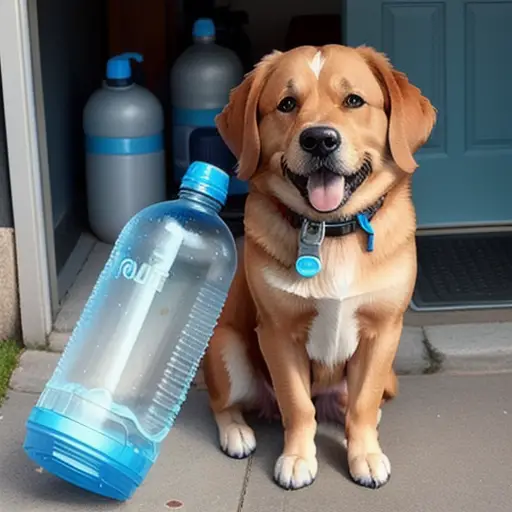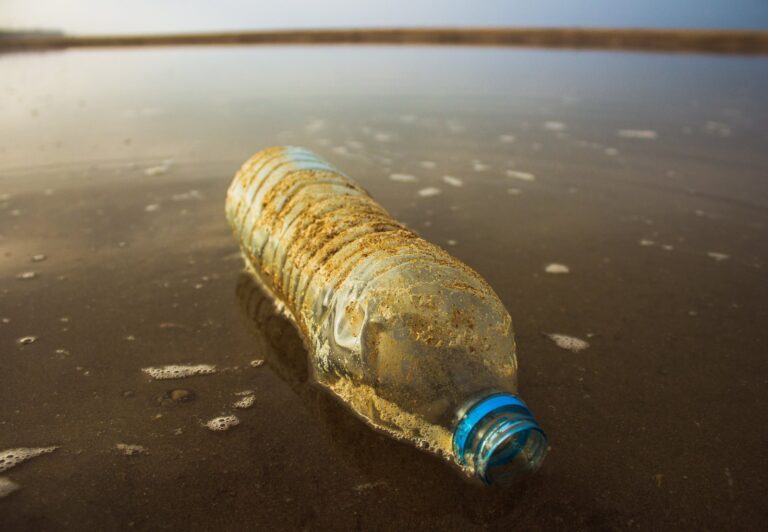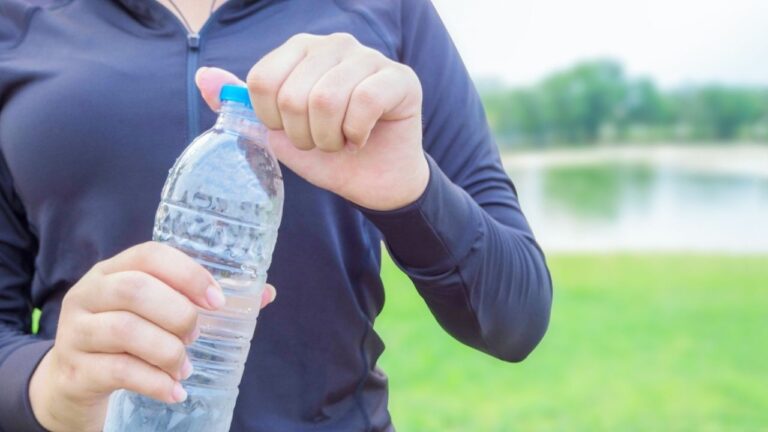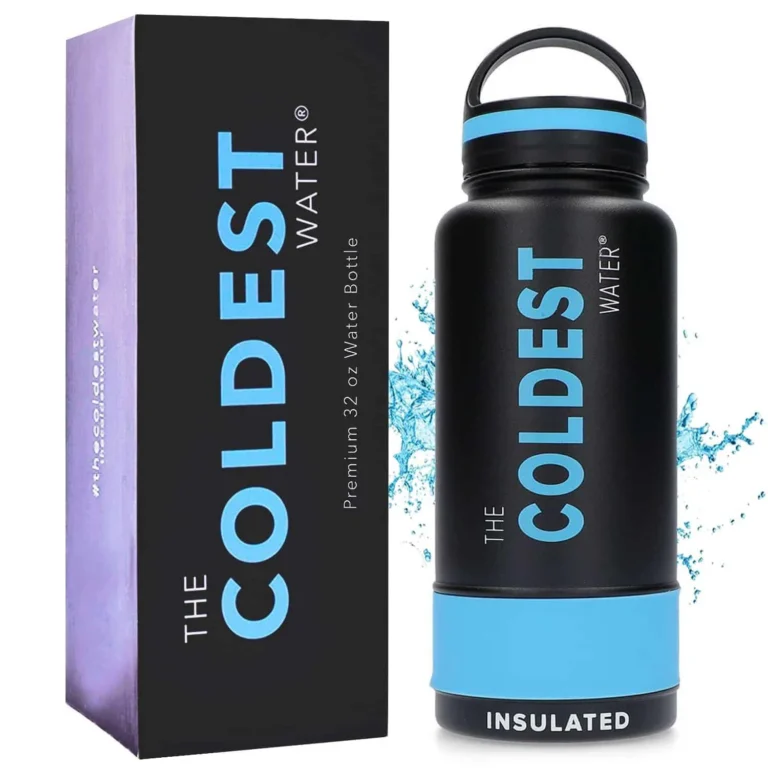Water bottles are a common item that many people use to stay hydrated on the go. But when it comes to our furry friends, are water bottles bad for dogs? We’ll delve into the factual data to explore the potential risks and dangers associated with dogs and plastic water bottles. From ingestion hazards to potential chemical exposure, understanding the facts is crucial in keeping our canine companions safe and healthy. In this blog post, we’ll uncover the truth and provide insight on how to ensure your dog’s well-being when it comes to using water bottles.
I. The importance of proper hydration for dogs
Proper hydration is crucial for the overall health and well-being of dogs. Just like humans, dogs need a sufficient amount of water to regulate their body temperature, support organ function, and aid in digestion. Here are some key reasons why proper hydration is important for dogs:
- Temperature regulation: Dogs rely on panting to cool down, which can cause them to lose significant amounts of water. Adequate hydration helps dogs regulate their body temperature and prevent overheating.
- Organ function: Water is essential for proper organ function, including the kidneys and liver. It helps eliminate waste products, maintain electrolyte balance, and support overall metabolism.
- Digestion: Sufficient water intake aids in digestion and prevents constipation. It helps keep the gastrointestinal tract lubricated and facilitates the breakdown and absorption of nutrients.
- Joint health: Proper hydration is essential for maintaining healthy joints in dogs, as water serves as a lubricant and shock absorber for the joints.
To ensure your dog stays properly hydrated, always provide access to clean and fresh water throughout the day. Additionally, consider the type of water container you use, such as stainless steel or ceramic bowls, as they are less likely to retain bacteria or leach harmful chemicals.
II. Common water bottle materials and their safety for dogs
Plastic water bottles
Plastic water bottles may not be the best choice for dogs due to several reasons. While they may seem convenient, there are potential risks and health concerns associated with using plastic water bottles for dogs’ hydration. Here are some factors to consider:
- Choking hazard: Plastic water bottles could pose a choking hazard for dogs, especially if they chew on the bottle or accidentally swallow small pieces of plastic.
- Chemical leaching: Plastic bottles may contain harmful chemicals such as BPA (bisphenol A) that can leach into the water and be harmful to pets over time.
- Bacterial contamination: Plastic bottles are difficult to thoroughly clean and may harbor bacteria, which can lead to infections or digestive issues in dogs.
It is important to prioritize the safety and well-being of your dog when choosing a suitable water bottle. Consider alternatives like stainless steel or glass water bottles, which are more durable, non-toxic, and easier to clean. Additionally, using stainless steel or ceramic bowls or investing in portable water dispensers specifically designed for pets can provide a safer and more convenient option for your dog’s hydration needs. As always, consult with a veterinarian for professional advice on your dog’s specific requirements.
Stainless steel water bottles
Stainless steel water bottles are a popular choice for dog owners who prioritize durability and safety. Here are some key benefits of using stainless steel water bottles for dogs:
- Durability: Stainless steel water bottles are built to last, making them a reliable option for outdoor activities or travel with your dog.
- Safety: Unlike plastic bottles, stainless steel bottles do not contain harmful chemicals that can leach into the water and potentially harm your dog’s health.
- Easy to clean: Stainless steel bottles are easy to clean and sanitize, reducing the risk of bacterial contamination.
- Insulation: Some stainless steel bottles have insulating properties that can keep your dog’s water cool for longer periods, especially in hot weather.
- No flavor transfer: Stainless steel does not retain or transfer flavors, ensuring that your dog’s water tastes fresh and clean.
It is important to note that while stainless steel water bottles are generally safe for dogs, it is still recommended to use pet-specific water bottles or portable water dispensers designed specifically for their needs. These products often come with built-in bowls or attachments that make it easier for dogs to drink comfortably. Always prioritize your dog’s safety and hydration needs when choosing a water bottle for them.
Glass water bottles
Glass water bottles are a safe and eco-friendly option for providing water to your dogs. They are non-toxic and do not leach chemicals into the water, ensuring that your pet stays healthy. Glass bottles also do not retain odors or flavors, keeping the water fresh and clean for your dog.
Here are some key advantages of using glass water bottles for dogs:
- Safety: Glass bottles are sturdy and less likely to break compared to plastic bottles. They are also a safer alternative to plastic as they do not pose a choking hazard or the risk of chemical leaching.
- Hygienic: Glass is easy to clean and sterilize, reducing the risk of bacterial contamination. It is also resistant to scratches, making it less likely to harbor bacteria.
- Tasteless and Odorless: Glass does not alter the taste or smell of the water, ensuring that your dog stays hydrated without any aversion.
- Environmentally Friendly: Glass is a sustainable material that can be recycled, making it an eco-conscious choice for pet owners.
When using glass water bottles for your dogs, it is important to handle them with care to avoid accidental breakage. Additionally, using a protective sleeve or cover can provide added durability and prevent slippage.
III. Potential dangers of water bottles for dogs
Choking hazard
When it comes to using water bottles for dogs, one potential concern is the risk of choking. Dogs, especially those that are prone to chewing or have a strong bite force, may accidentally bite off or chew on pieces of the water bottle, which can lead to choking hazards.
To mitigate the risk of choking, it is important to closely monitor your dog while they are using a water bottle. If you notice any signs of chewing or biting on the bottle, it is best to remove it immediately and offer an alternative drinking method.
Some signs that your dog may be experiencing a choking hazard include:
- Coughing or gagging
- Difficulty breathing
- Pawing at their mouth or throat
- Panicked behavior
If you suspect that your dog is choking, it is important to act quickly. First, calmly assess the situation and try to remove the object from your dog’s mouth using the appropriate technique. If you are unable to remove the object, it is essential to seek immediate veterinary assistance.
When it comes to providing water for your dog, it may be safer to explore alternative options such as stainless steel or ceramic bowls, portable water dispensers, or pet-specific water bottles. These alternatives can help reduce the risk of choking hazards and ensure your dog stays properly hydrated.
Chemical leaching
Chemical leaching is a concern when it comes to using certain types of water bottles for dogs. Plastic water bottles, in particular, can contain harmful chemicals such as BPA (bisphenol A) and phthalates. These chemicals can leach into the water, especially when the bottle is exposed to heat or sunlight.
Exposure to these chemicals can have negative health effects on dogs. They can disrupt hormone function, potentially leading to reproductive and developmental issues. Dogs may also experience digestive problems or allergic reactions from ingesting water contaminated with these chemicals.
To avoid chemical leaching, it is recommended to opt for safer alternatives such as stainless steel or glass water bottles. These materials are non-toxic and do not leach harmful substances into the water. Additionally, stainless steel water bottles are durable and easy to clean, while glass water bottles are a good option for dogs who are prone to allergies.
By considering the potential risks of chemical leaching and choosing safer alternatives, you can ensure the well-being and hydration of your furry friend.
Bacterial contamination
Bacterial contamination is a potential risk when using water bottles for dogs. Plastic bottles, in particular, can harbor bacteria if not cleaned and maintained properly. Bacteria can multiply rapidly in warm environments, which can occur inside a water bottle left in the sun or heat.
To mitigate the risk of bacterial contamination, it is crucial to clean your dog’s water bottle regularly, using hot water and soap or a pet-safe bottle cleaner. Additionally, avoid using bottles with small openings or crevices that are difficult to clean effectively.
Here are some signs of bacterial contamination in dogs:
- Choking or gagging: If your dog suddenly begins to choke or gag after drinking from a water bottle, it could indicate a bacterial infection.
- Vomiting or diarrhea: Bacterial contamination can lead to gastrointestinal issues such as vomiting or diarrhea.
- Behavioral changes: If your dog’s behavior changes suddenly after drinking from a water bottle, it could be a sign of a bacterial infection.
To minimize the risk of bacterial contamination, consider using stainless steel or ceramic bowls instead of water bottles. These materials are easier to clean and less likely to harbor bacteria. Alternatively, you can use portable water dispensers specifically designed for dogs, which are often easier to clean and maintain. It is important to balance convenience and safety when choosing a hydration method for your dog.
Choking or gagging
Choking or gagging is a potential concern when it comes to dogs drinking from water bottles. Dogs may struggle with the mechanics of drinking from a bottle, especially if they are not used to it or if the bottle has a narrow opening. This can lead to them choking or gagging on the water or the bottle itself.
To prevent choking or gagging, it is important to consider the size and shape of the bottle opening. Wide-mouth bottles or bottles with a special attachment that mimics a water bowl can be a safer option. Additionally, training techniques can be employed to teach your dog how to drink from a bottle without choking. Positive reinforcement and patience are key in this process. Seeking professional advice from a dog trainer or veterinarian can also be beneficial in addressing specific concerns related to your dog’s needs.
It’s important to balance convenience and safety when it comes to your dog’s hydration needs. While water bottles can be a convenient option for on-the-go hydration, it is crucial to prioritize your dog’s well-being and choose a method that ensures their safety and comfort.
Vomiting or diarrhea
Vomiting or diarrhea can be signs of an upset stomach or gastrointestinal issues in dogs. If your dog experiences these symptoms after drinking from a water bottle, it may indicate a negative reaction to the water or the material of the bottle. Plastic water bottles, in particular, can leach chemicals into the water, which may cause digestive discomfort in dogs.
To avoid potential stomach issues, it is recommended to use alternative options such as stainless steel or glass water bottles when providing water for your dog. These materials are generally safer and do not leach harmful substances into the water. Additionally, using a stainless steel or ceramic bowl for your dog’s regular water intake can also minimize the risk of gastrointestinal problems.
If your dog continues to experience vomiting or diarrhea after switching to a different water bottle or container, it is important to seek professional advice from a veterinarian. They can evaluate your dog’s specific needs and provide guidance on how to balance convenience and safety when it comes to ensuring proper hydration for your furry friend.
Behavioral changes
When it comes to using water bottles for dogs, it is important to pay attention to any behavioral changes that your pet may exhibit. Some dogs may have difficulty adjusting to drinking from a water bottle compared to a regular bowl. They may display hesitation, confusion, or even aversion towards the unfamiliar object.
Behavioral changes can include:
- Avoidance: Your dog may actively avoid the water bottle, refusing to drink from it or showing signs of fear or discomfort.
- Frustration: Dogs may become frustrated when they are unable to access water easily and may display signs of restlessness or agitation.
- Increased Water Consumption: Some dogs may overcompensate for the unfamiliarity of the water bottle by drinking less frequently or in excess when given the opportunity.
- Anxiety: Changes in behavior, such as whining, panting, or pacing, can be indicators of anxiety or stress related to the use of a water bottle.
It is essential to monitor your dog’s reaction to using a water bottle and provide support and positive reinforcement during the adjustment period. If your dog continues to display behavioral changes or avoids drinking water altogether, it may be necessary to explore alternative options such as stainless steel or ceramic bowls or portable water dispensers specifically designed for pets. Seeking professional advice from a veterinarian can also help address your dog’s specific needs and ensure their hydration is not compromised.
Remember, it is crucial to prioritize your dog’s comfort and safety when choosing a hydration solution, balancing convenience with their well-being.
V. Safe alternatives to water bottles for dogs
Stainless steel or ceramic bowls
When it comes to choosing the right water bowl for your dog, stainless steel or ceramic options are often recommended. These materials have several advantages over plastic water bottles:
Stainless steel bowls are durable and resistant to scratches, making them long-lasting and suitable for heavy use. They are also less likely to harbor bacteria and are easy to clean, promoting good hygiene for your pet. Stainless steel bowls are also non-porous, which means they won’t absorb odors or flavors from food or water, ensuring a fresh and clean taste every time.
Ceramic bowls are another popular choice due to their aesthetic appeal and stability. They come in a variety of designs and sizes, allowing you to find one that matches your home decor. Ceramic bowls are also heavy, which prevents your dog from tipping them over easily. Like stainless steel, ceramic bowls are easy to clean and do not retain odors. However, it’s important to note that some ceramic bowls may have a glaze that can chip or crack over time, so regular inspection is necessary to ensure your dog’s safety.
Here’s a quick summary of the benefits of stainless steel and ceramic water bowls:
| Stainless Steel Bowls | Ceramic Bowls | |||||||||||||
|---|---|---|---|---|---|---|---|---|---|---|---|---|---|---|
| Durability | Resistant to scratches and long-lasting | Sturdy and stable | Hygiene | Resistant to bacteria and easy to clean | Non-porous and doesn’t absorb odors | Aesthetics | Simple and sleek design | Various designs and sizes available | Safety | Non-toxic and safe for pets | Inspect for cracks or chips regularly | Stability | Secure and difficult to tip over | Heavy and stable |
When choosing between stainless steel and ceramic bowls, consider your dog’s specific needs, preferences, and any potential risks associated with each material. It’s always important to prioritize your pet’s health and safety when it comes to their hydration needs.
Portable water dispensers
Portable water dispensers are a convenient option for keeping your dog hydrated on the go. These dispensers typically consist of a water reservoir and a built-in bowl or spout for easy access to water. They are compact, lightweight, and designed to prevent leaking, making them ideal for taking on walks, hikes, or trips to the park.
Portable water dispensers offer several advantages for dog owners. Firstly, they eliminate the need to carry a separate water bottle and bowl, saving space in your bag or backpack. Secondly, they provide a clean and hygienic water source, ensuring that your dog stays healthy and hydrated. Additionally, these dispensers can be easily refilled, allowing you to provide fresh water for your dog whenever needed.
When choosing a portable water dispenser, look for one that is made from food-grade materials and is easy to clean. Some models even have additional features like a filter to remove impurities from the water. With the right dispenser, you can ensure that your dog always has access to clean and fresh water, no matter where you are.
Pet-specific water bottles
When it comes to providing water for your dog on the go, pet-specific water bottles can be a convenient option. These bottles are designed with features that cater specifically to the needs of dogs and make it easier for them to drink water on the move.
Pet-specific water bottles typically have a built-in bowl or dispenser that allows you to offer water to your dog without the need for a separate container. Some bottles have a squeeze mechanism that releases water into the bowl when activated, while others have a flip-out bowl that your dog can directly drink from.
These bottles are often made from materials that are safe for dogs, such as BPA-free plastic or stainless steel. They are also designed to be leak-proof and have a carrying handle or strap for easy transportation. Some bottles even come with additional features like a filter to remove impurities from the water.
When choosing a pet-specific water bottle, consider factors such as the size and weight of the bottle, ease of use, and the capacity it can hold to ensure it meets your dog’s hydration needs.
Here are some pros and cons of using pet-specific water bottles:
Pros:
- Convenient and easy to use on the go
- Eliminates the need for carrying a separate water bowl
- Designed with features that cater specifically to dogs’ needs
- Available in different sizes and materials to suit individual preferences
- Some bottles come with additional features like filters for cleaner water
Cons:
- May not hold as much water as regular water bottles
- Some dogs may take time to adjust to drinking from the bottle
- Can be an additional expense compared to using regular water bottles
Overall, pet-specific water bottles can be a practical solution for keeping your dog hydrated while you’re out and about. However, it’s important to note that different dogs have different preferences, so it’s always a good idea to introduce the bottle gradually and monitor your dog’s reaction to ensure they are comfortable drinking from it.
VIII. How to introduce a water bottle to your dog
Training techniques
When it comes to training techniques regarding water bottles and dogs, it’s important to approach the issue with patience and positive reinforcement. Here are some tips to help train your dog to drink from a water bottle:
- Introduce the water bottle gradually: Start by placing the water bottle near your dog’s regular water bowl. Allow them to sniff and investigate it at their own pace.
- Use treats and rewards: Encourage your dog to approach the water bottle by offering treats and praise. Associate the water bottle with positive experiences to create a positive association.
- Show your dog how it works: Gently squeeze the water bottle to release a small amount of water. Let your dog observe and hear the sound. You can also demonstrate by touching the tip of the bottle to your dog’s lips.
- Gradually replace the regular water bowl: Once your dog seems comfortable with the water bottle, you can start reducing the use of their regular water bowl and gradually transition to using the water bottle as the primary water source.
Remember, every dog is different, and it may take time for them to adjust to the new method of drinking water. Stay patient, consistent, and always monitor your dog for any signs of discomfort or stress during the training process. If you’re experiencing difficulties, consider seeking professional advice from a dog trainer or behaviorist who can provide personalized guidance based on your dog’s specific needs. Balancing convenience and safety should always be a priority when it comes to your dog’s hydration needs.
Positive reinforcement
Positive reinforcement is an effective and humane training technique that can be used to encourage desired behaviors in dogs. When it comes to their hydration, positive reinforcement can be utilized to encourage dogs to drink from appropriate water sources, such as their own water bowl or a portable water dispenser.
To implement positive reinforcement, you can reward your dog with treats, praise, or a special toy whenever they choose to drink from their designated water source. You can also incorporate verbal cues or commands, such as “drink” or “water,” to further reinforce the behavior.
Consistency is key when using positive reinforcement. Make sure to provide rewards immediately after your dog demonstrates the desired behavior, and be patient as it may take time for them to understand what you’re asking of them.
Remember, positive reinforcement should always be paired with patience, consistency, and respect for your dog’s unique needs and learning pace. If you’re unsure about the best training approach for your dog, consulting a professional trainer or behaviorist can provide you with tailored guidance and support.
IX. Consultation with a veterinarian
Seeking professional advice on your dog’s specific needs
It’s always a good idea to seek professional advice when it comes to your dog’s specific hydration needs. Every dog is unique and may have different requirements based on their size, breed, age, and overall health.
If you have any concerns or questions regarding the type of water bottle or hydration method that is best for your dog, consulting with a veterinarian or a professional dog trainer can provide you with valuable insights and guidance. They can assess your dog’s specific needs and recommend the most suitable options for ensuring their proper hydration.
By seeking professional advice, you can get tailored recommendations that take into account any specific health conditions or dietary restrictions that your dog may have. They can provide you with information on the best water bottle materials, bowl options, and training techniques to ensure your dog stays hydrated in a safe and effective manner.
Remember that professional advice can help you strike the right balance between convenience and safety when it comes to your dog’s hydration needs.
X. Conclusion
Balancing convenience and safety for your dog’s hydration needs
When it comes to providing water for your dog, it’s essential to balance convenience and safety. While plastic water bottles may be convenient for on-the-go hydration, they come with potential risks. Plastic bottles can leach harmful chemicals into the water, leading to health issues for your dog. They can also become a choking hazard if your dog tries to play with or chew on the bottle. Glass bottles, while safer in terms of chemical leaching, can shatter and pose a danger to your dog if broken.
A better alternative is to use stainless steel or ceramic bowls for regular water consumption at home. These materials are safe and do not contain harmful chemicals. For on-the-go hydration, consider portable water dispensers specifically designed for dogs. These dispensers are convenient to carry and ensure that your dog can drink safely and hygienically. Additionally, some pet-specific water bottles have built-in bowls or spouts that make drinking easier for your furry friend.
In all cases, it’s important to regularly clean and sanitize your dog’s water containers to prevent bacterial contamination. Lastly, don’t forget to seek professional advice from a veterinarian to address any specific hydration needs or concerns your dog may have.




